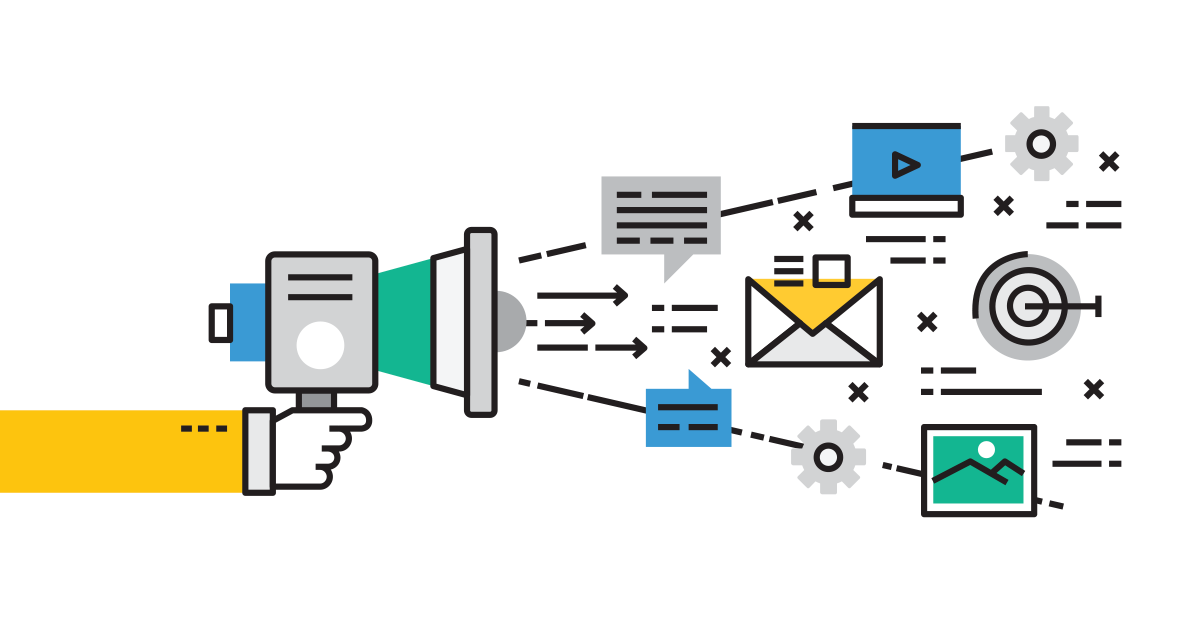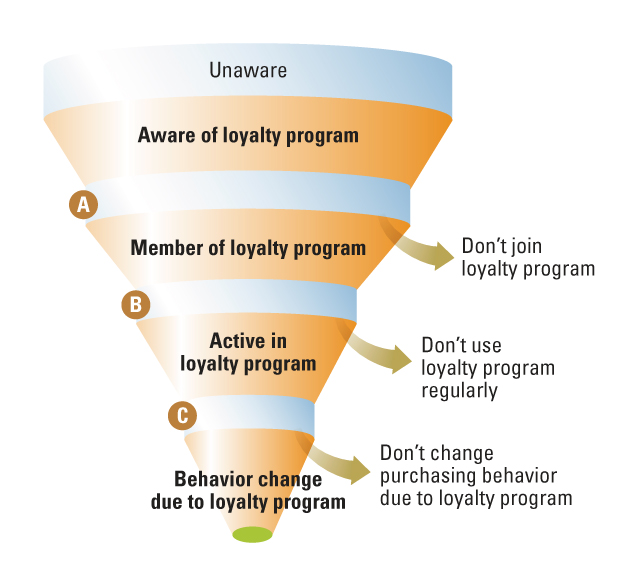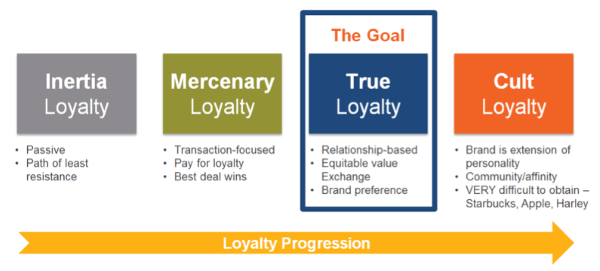All Categories
Featured
Table of Contents
In Niceville, FL, Nadia Mcpherson and Milton Faulkner Learned About Effective Marketing Tips

What if you could grow your company without increasing your costs? In reality, what if you could really lower your spending however increase your sales, year after year? Would you do it? If you're a company owner, then you'll likely offer a definite 'yes', a simple answer to an even easier question.
A benefits program tracks and benefits particular costs behavior by the customer, offering unique advantages to loyal consumers who continue to patronize a specific brand. The more that the consumer invests in the shop, the more advantages they get. With time, this reward constructs faithful customers out of an existing customer base.

Even if you already have a reward program in place, it's a great idea to dig in and fully understand what makes customer loyalty programs work, as well as how to carry out one that costs you little money and time. Don't stress, I'll help you with that. I'll break down the main advantages of a loyalty program and the very best ways to develop devoted customers.
Let's dig in. Client loyalty is when a client go back to do service with your brand over your competitors and is mainly influenced by the favorable experiences that the consumer has with your brand. The more positive the experience, the more most likely they will go back to patronize you. Client loyalty is exceptionally essential to companies since it will assist you grow your company and sales faster than a simple marketing plan that focuses on recruiting brand-new consumers alone.
A few methods to determine consumer commitment consist of:. NPS tools either send out a brand name performance survey through email or ask clients for feedback while they are visiting a business's website. This details can then be used to much better comprehend the likelihood of customer loyalty. A repurchase ratio determines the ratio of repeat purchasers versus one-time buyers.
Customer commitment index (CLI). The CLI tracks consumer commitment in time and is similar to an NPS survey. However, it takes into consideration a few extra elements on top of NPS like upselling and buying. These metrics are then utilized to evaluate brand name loyalty. A consumer commitment program is a marketing method that rewards customers who make purchases and engage with the brand name on a continued basis.
Client rewards programs are designed to incentivize future purchases. This motivates them to continue working with your brand name. Customer commitment programs can be established in various methods. A popular client commitment program rewards consumers through a points system, which can then be invested in future purchases. Another type of consumer commitment program might reward them with member-exclusive perks or totally free gifts, or it might even reward them by contributing cash to a charity that you and your clients are mutually enthusiastic about.
In North Wales, PA, Byron Best and Pedro Martinez Learned About Potential Clients
By providing rewards to your clients for being loyal and helpful, you'll develop a connection with them, deepening their relationship with your brand name and hopefully making it less likely for them to change to a rival. You have actually most likely seen customer commitment programs in your own shopping experience, whether at your preferred coffee shops or your most frequented grocery stores.
But even if everybody is doing it does not imply that's a sufficient reason for you to do it too. The better you comprehend the advantages of a consumer rewards program, the more clarity you will have as you produce one for your own store. You won't be sidetracked by amazing benefits and complex commitment points systems.
Keep in mind: work smarter, not harder. Customer retention is the primary benefit of a rewards program that serves as a structure to all of the other benefits. As you offer incentives for your existing client base to continue to buy from your shop, you will supply your store with a consistent circulation of money month after month.
By growing your retention rate, you can stop spending as much time or money on increasing your overall variety of customers. Why is this important? Loyal customers have a greater conversion rate than brand-new clients, implying they are most likely to make a transaction when they visit your shop than a new consumer.
By increasing your retention rate by just 5 percent, you can increase your earnings by 25 percent and as much as by 95 percent. Needless to state, your retention rate matters. Key Takeaway: If you wish to considerably increase your revenues, supply rewards for your existing clients to continue to go shopping at your store.
And you won't have to invest cash on marketing to get them there. Client acquisition (aka bringing in new customers) takes a lot of effort and money to persuade total strangers to trust your brand, pertained to your store, and attempt your products. In the end, any cash earned by this brand-new customer is overshadowed by all of the cash invested in getting them there.
Secret Takeaway: If you wish to decrease spending, concentrate on client retention rather of consumer acquisition. When you concentrate on supplying a positive tailored experience for your existing consumers, they will naturally tell their family and friends about your brand. And with each subsequent transaction, faithful customers will tell a lot more individuals per deal.
In 30701, Elyse Mays and Talon Schmidt Learned About Effective Marketing Tips
The best part? Due to the fact that these new customers originated from trusted sources, they are more likely to become devoted consumers themselves, investing more on average than new clients generated by other marketing efforts. The Chase Ultimate Benefits program, for instance, offers significant advantages for individuals who travel a lot.
The 'supreme benefits' that Chase cardholders receive include 2x points per dollar invested on all travel purchases along with primary rental vehicle insurance, no foreign deal fees, trip cancellation insurance coverage, and purchase security. For people who take a trip a lotand have non reusable income to do sothere is a huge incentive to spend cash through the ultimate benefits program.
This whole procedure makes redeeming rewards something worth extoling, which is precisely what numerous cardholders end up doing. And to help them do it, Chase offers a perk for that too. Secret Takeaway: Make it easy for your consumers to brag about you and they will get the word out about your purchase totally free.
As soon as you get the essentials down, then utilizing a loyalty rewards app can help take care of the technical details. Here are the actions to start with producing your client commitment program. No customer wishes to buy items they don't desire or need. The exact same goes for your commitment program.
And the only way to tailor an alluring client loyalty program is by totally knowing your consumer base. The best way to do this? By carrying out these strategies: Build client contact details any place possible. Guarantee your business is continuously developing a comprehensive contact list that enables you to gain access to existing clients as frequently and as easily as possible.

Track client habits. Know what your customers want and when they want it. In doing so, you can expect their desires and needs and supply them with a commitment program that will satisfy them. Classify consumer individual traits and choices. Take a multi-faceted technique, don't restrict your loyalty program to just one avenue of success.
Encourage social media engagement. Frame methods to engage with your customers and target market on social networks. They will soon provide you with extremely informative feedback on your items and services, enabling you to much better understand what they expect from your brand. As soon as you have worked out who your consumers are and why they are working with your brand name, it's time to choose which type of commitment rewards program will motivate them to stay devoted to you.
In 60014, Sean Ayala and Miley Madden Learned About Vast Majority
Nevertheless, the most common client commitment programs centralize around these main concepts: The points program. This type of program focuses on satisfying clients for every single purchase they make with points in a point system. These points can then either be used on future purchases or put towards some form of reward.
The paid program. This kind of program requires clients to pay a one-time or annual cost to join your VIP list. Loyalty members who come from this list have the ability to access distinct benefits or member-exclusive advantages. The charity program. This type of program is a little different than the others.
This is achieved by motivating them to do business with the brand and, in return, their loyalty will be rewarded with a contribution to a charity. The tier program. This kind of program focuses on increasing levels of brand name loyalty. The more faithful a consumer is to a brand, the greater tier they will climb to and the much better the benefits they will get.
This type of program is just as it sounds, where one brand partners with another brand name to provide their collective audiences with unique member discount rates or offers that they can redeem while working with either brand name. The neighborhood program. This kind of program incentivizes brand commitment by providing its members with access to a like-minded community of people.
This type of program is fairly similar to paid programs, nevertheless, the subscription charge happens regularly instead of a one-time payment. Next, choose which client interactions you 'd like to reward. Base these benefits around which interactions benefit your company the most. For instance, to assist your company out, you can offer action-based rewards like these: Reward clients more when working with your brand name during a slow period of the year or on a notoriously sluggish day of organization.
Reward consumers for engaging with your brand name on social networks. Incentivize particular items you are trying to move rapidly. Incentivize purchases that are over a particular dollar quantity. The concept is to make your customer commitment program as easy as possible for your consumers to utilize. If your consumer loyalty program isn't staff friendly, isn't simple to track, is too costly to run, or isn't easy for your consumers to use or comprehend, then staff and customers alike probably will not make the most of it.
To get rid of these barriers to entry, consider integrating a customer loyalty software that will help you keep on top of all of these elements of your program. Some quality consumer program software consist of:. CandyBar is a digital punch card program. It works by tracking your customer's purchases through an app on a computer system, phone, or tablet.
In Houston, TX, Emilie Barton and Iliana Sutton Learned About Marketing Campaign
Loyalty members can then examine their benefits via text message and entrepreneur can utilize the program to call their clients. Yotpo. Yotpo is a cloud-based client loyalty platform solely for eCommerce organizations. This software is particularly proficient at gathering every type of user-generated material, useful for tailoring a much better client experience.
Loopy Commitment is a handy client loyalty software application for businesses that mainly use Google Wallet or Apple Pay as their payment platforms. The software application creates a digital commitment card that sends out push notifications to their clients' phones when they remain in close proximity to their traditional shop. When you've put in the time to choose which client commitment methods you are going to execute, it's time to start promoting and signing up your first loyalty members.
Use in-store ads, incorporate call-to-actions on your site, send promotions through email newsletters, or upload advertising posts on social media to get your consumers to join. It is essential to comprehend the main benefits of a client rewards program so that you can produce a tailored experience for both you and your consumer.
Consider it. You understand what sort of products your consumers like to buy but do you understand what brings them back, day after day, week after week? What makes them pick your store over the shop across the street? What makes them your client and not the customer of your biggest rival? Surprisingly, the answers to these concerns do not come down to discount costs or quality items.
Latest Posts
Wicky Design: Philadelphia Web Design Tips and Tricks:
Penner Home - Durham Web Design - Penner Web Design ... Tips and Tricks:
Freelance Website Designer Frederick MD